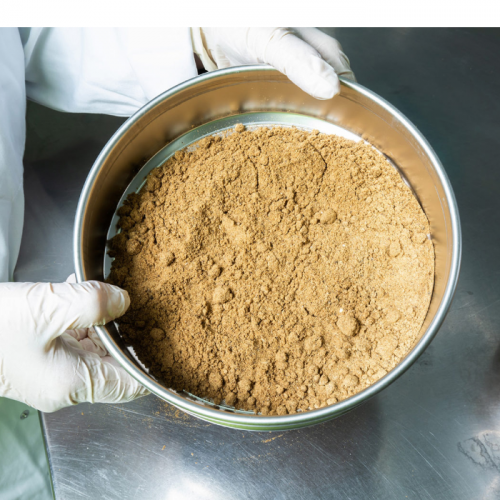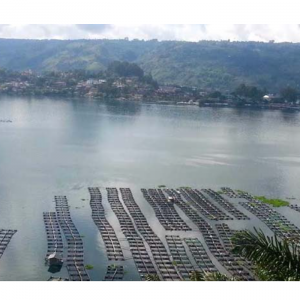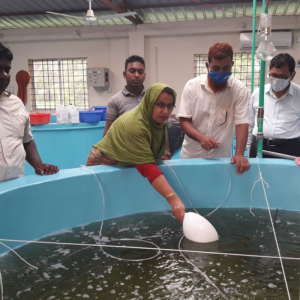
Marine Ingredients Are Stable in Volume, Strategic in Aquaculture Nutrition
| Tue, 20 Oct 2020 - 11:26
With consistent annual production at around 5 million metric tons of fishmeal and 1 million metric tons of fish oil (Hamilton et al., 2020), these crucial marine ingredients are not only stable in volume but also strategic in nutrition.
As a result of decades of innovation aiming at increasing yield at a cost that commercially creates value in the whole value chain, fishmeal and fish oil provide nutrients essential for the growth and health of many farmed fish species in a single package that is not found in any other individual ingredients. For many farmed species, they provide nutrition in a manner that is close to that of the wild conspecifics.
(Editor’s Note: The Advocate asked IFFO to present its views on the role of fishmeal and fish oil in aquaculture feeds, without having first viewed the “Point” article authored by Kevin Fitzsimmons, Ph.D. To read Prof. Fitzsimmons argument that farmed fish have only required nutrients, not ingredients, please click here.)
Unmatched properties
Examination of the nutritional components of fishmeal and fish oil reveals some unique characteristics. Fishmeals are consistently high in protein, thus simplifying feed formulation (Jackson and Shepherd, 2010). They are high in digestibility (Opstvedt et al., 2003) and possess an amino acid profile that is very close, or identical, to the requirements of fed-fish species (Glencross, 2019). Where supplementation with other proteins occurs, the amino acid balance may be disrupted, necessitating the supplementation of specific essential amino acids often with synthetically produced alternatives. Feeds with lower inclusions may often require supplementation with specific individual amino acids to achieve a nutritionally complete diet, especially methionine and lysine (Craig et al., 2017).
Fishmeal also contains many other nutrients that are confirmed or linked to healthful benefits in feed formulations. This nutritional richness includes many soluble proteins of small molecular size, returned to the press cake from the stickwater during the production process of fishmeal. Known as peptones, these have been shown to benefit palatability of feed (Aksnes et al., 2006), feed intake and growth (Kousoulaki et al., 2012), and become an important factor in ingredient replacement studies when fish may reduce feed intake where high levels of fishmeal substitution have occurred, such as observed with barramundi (Glencross et al., 2011).
When this nutritional richness is understood, it is easy to understand why fishmeal holds such a unique position in fish nutrition science, and why substitution of this valuable ingredient is not straightforward.
There are other compounds of great nutritional interest in fishmeals, including taurine [a free amino acid linked to increased growth (Kousoulaki et al., 2007)] and regarded as nutritionally essential for marine fish species (Salze and Davis, 2015) even if it doesn’t seem to possess a proteogenic role.
Fishmeal is rich in phosphorus, calcium, magnesium, sodium, copper and iron, as well as a range of vitamins. Photo by Karen Murray, courtesy of IFFO.
Notably, plant-based proteins are deficient in taurine (El-Sayed, 2013). Fishmeals are also known to be rich in various minerals such as phosphorus, calcium, magnesium, sodium, copper and iron, as well as vitamins such as the B-group, D, E and K (Windsor and Barlow, 1981). In addition, there are further bioactives known to be present in fishmeal, implicated in a range of beneficial physiological effects, including trimethylamine oxide (Asknes and Mundheim, 1997), nucleotides (Do Huu et al., 2012; Nates et al., 2009) and glycosaminoglycans (Raghuraman, 2013; Arima et al., 2013). When this nutritional richness is understood, it is easy to understand why fishmeal holds such a unique position in fish nutrition science, and why substitution of this valuable ingredient is not straightforward.
Similarly, fish oil also holds a distinctive position as the major provider of two of the essential fatty acids required for complete feeds for some farmed fish species, eicosapentaenoic acid (EPA) and docosahexaenoic acid (DHA), both of which possess extremely high biological activity (Glencross, 2009). Although there continues to be development in the supply of EPA and DHA from other sources such as algal oils (Harwood, 2019) and genetically modified terrestrial crops such as Camelina (Betancor et al., 2015) and Canola (Rutyer et al., 2019), these oils have neither the full fatty acid profile of fish oils, nor yet the availability of supply required by the aquafeed industry. This is an important factor when some developing science has indicated important beneficial effects of other fatty acids found in some fish oils, such as cetoleic acid (Østbye et al., 2019).
Increasing use of fish byproducts
The consistency of supply is testimony to good fisheries management, in general, of the majority of the small pelagic fish stocks confirmed by annual independent NGO review (Sustainable Fisheries Partnership, 2018; 2019). Peer-reviewed science indicates that there are differing opinions on the impact of harvesting fish stocks on predator populations (Pikitch et al., 2012; Hilborn et al., 2017) but those fisheries continual performance tends to indicate sustainability. Additionally, at least 34 percent of fishmeal and fish oil is estimated to be produced from fish processing byproducts (Jackson and Newton, 2016).
With the growth in global fed aquaculture estimated by the FAO at 5.3 percent per annum from 2001 to 2018 (FAO, 2020), fishmeal and fish oil could not continue to support global aquafeed businesses on its own. That these important materials needed to be extended by other protein and oil sources to meet a growing demand for feed volume is an incontrovertible truth.
Comparing nutritional profiles
Supplementation of fishmeal and fish oil with other materials has supported the continued success of aquaculture thus far. Initially, this was achieved with the use of vegetable products such as soya meal (and secondary processed materials such as soya protein concentrate), and vegetable oils such as rapeseed oil in the 1990s and onwards (Hardy, 2010; Ytrestøyl et al., 2015). There are, however, impacts of the changing composition of these diets such as in relation to end product quality (e.g. long-chain omega-3 fatty acid concentration, as reported by Sprague et al. (2016). Many of the plant-based protein sources are known to contain anti-nutritional factors (ANFs) which include a range of compounds known to have an effect on fish physiology (Francis et al., 2001). ANFs are required to be managed in production processes to mitigate the potential risk they carry in feed formulations.
In general, additional raw materials do not possess a comparable nutritional profile, whether proteins or oils. Taking only one example, it is observed that insect meal products vary in nutritional composition depending on the substrate used to feed the animals (Sánchez-Muros et al., 2013). Whilst amino acid profiles may be reasonably close to those of fishmeal with the exception of two or three amino acids (Barroso et al., 2013), farmed insects are known to possess low omega-3 fatty acid concentrations and have suboptimal omega-6:omega-3 ratios (Oonincx et al., 2020).
In addition, the production of insect meal could add another trophic level into feed manufacture, and there are examples quoted of substrates for the production used for insect meal that could in themselves be used as aquafeed ingredients in their own right, such as distiller’s dried grains with solubles, known as DDGS (Webster et al., 2015). This clearly is not an efficient way of utilizing resources in feed and food production.
Where do challenges lie?
There is an urgent need for additional volume of feed ingredients, but this is far from straightforward. Developments should carry an emphasis on ingredients that provide nutrients to supplement the nutritional contributions of fishmeal and fish oil, and which are equally safe for the farmed animals, the consumer and the environment, and which can maintain consistent levels of production at realistic price points. In this way, all feed ingredient manufacturers can continue to support the successful development of global aquaculture.























